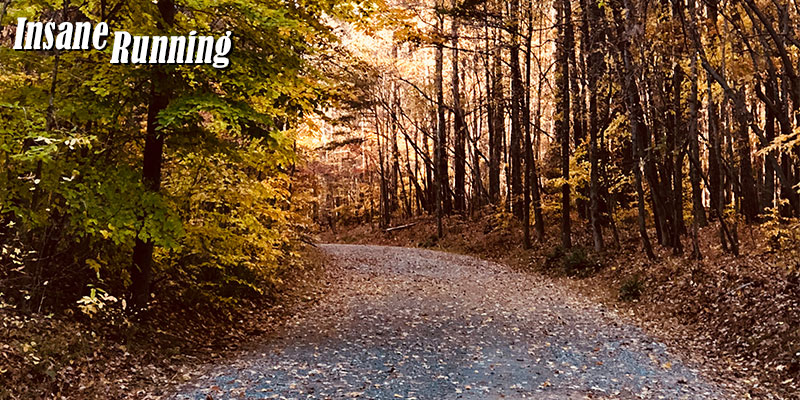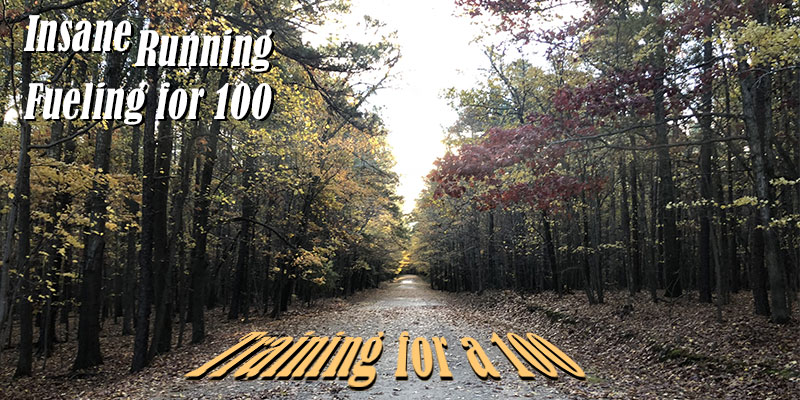Training for 100 miles: How I fuel for it
This is part of a series of posts regarding how did I trained and successfully completed a 100 miles Ultramarathon in under 24 hours. Training for a 100.
Today I would like to talk to you about fuel, how I fueled for my event, and the reasoning for my strategy. Given that, for an individual with diabetes, there might be a few additional details that you might consider given that glucose levels are going to vary during the span of hours and prolonged exercise.
The first thing to understand is that this is not a short event and not a marathon. Is not even a 50k, we are talking about doubling or tripling the distance and time that you will remain active. The key here is to think long-term rather than short-term strategy. Obviously, you might say, but one of the big items is your ability to retain and take fuel and liquids in the mid and later parts of the event. Meaning, could you drink or eat even if you are not feeling like you needed, or hungry, or your stomach is not feeling optimal? For many runners, this ability is key to being able to successfully finish the event.
Right from the start of the event, you are not thinking about fueling for how you are feeling now but fueling for how you are going to feel later on in the later parts of the event. Given that, my plan was to continue to fuel right from the start and not skip it during the event or the later parts of the race. My approach was to even if I was not going to stop at the aid stations I would have something with me to fuel and to continue to fuel in between stations. My goal was to take 100 to 200 calories worth of fuel every 3-4 miles. Those calories come in liquid, gel, or solid form. Having a variety of types and forms of fuel will allow you to adjust depending on your gut conditions at different stages of the event. The course for my 100-mile event was a loop course of approximately 12.5 miles per loop. That made it a little bit easier to plan since I was able to predict very consistently where the aid station and queue points to fuel with having a variety of options at the main base station.
Here are a few additional observations and suggestions for you to consider.
Make sure the fuel settles well. Try it out on your long run, especially on the second back-to-back runs. I will use the same fuel option I am planning to have at the main event during the long runs, to determine if in the later parts that fuel will be appetizing and if it will settle well. That does not mean you will not use that fuel option if it is not settling well in the later parts, but you might consider using those options at the beginning or early part of the event while selecting other diverse parts for later. For me, mandarins provided excellent relief from gels and energy drinks for the latter parts.
In my case, I tried the fuel in my long runs, different types of energy drinks. Settling in a mix of couple brands, with higher strength during the early miles and reducing the potency in the mid and later parts. I also tried several gels options, caffeinated and non-caffeinated. I tried different brands of cookies (Cameos being my favorite) and crakers.
I tried to use fruit, like banana, mango, mandarin, and apples. I tried them fresh and dried. Settling on Mandarins since they worked fantastic for me. I also tried having a sandwich (Half), with Almond butter, or a ham and cheese, with and without mayo, finally gelly sweet (That did not work out as I want it), and plenty of granola, protein, and energy bars. I made a list of the items that worked best.
Most recently I have been using baby food in pouches. Although they might not pack as many calories as gels, they settle fantastic given the simplicity of the ingredients.
Strategize your caffeine intake. This is another aspect to consider and set a plan in place. Whether you use caffeinated gels, pills, coffee, tea, or another type of caffeinated fuel you will need to think the plan of when you would like to use it. Keep in mind how caffeine works in your performance, for how long you feel that it does works and how much intake you can have without upsetting your stomach.
Plan your approach. Once you have tested the different options that work for you, jot down a high-level plan on how you are going to go about it. What are you going to use 1st? When is it appropriate to take liquid or solid fuel? How much are you going to take? Think about the calories intake and the calories burned. You are not going to be able to replenish everything but you want to replenish enough without making you feel bad, unwell, or uncomfortable. What are the options you would like to have at what miles? Divide the event into 4 or more segments that will allow you to plan better and strategize your approach.
For me, I relied on the liquid form of fuel during the 1st 20-25 miles, then shifted to some solids and energy drink for the mid part. Then for the later part of the event, the plan was to use mostly water with solid fuel. I also planned to start with half of a sandwich at the start of loops 4 and 5. To have mandarins for loops 5, 6, and 7. And a caffeinated gel as I was coming to the end of the loop starting at the end of loop 3, giving me time to digest the gel while transitioning at my base station at the start/end of the event/loop. I carried cookies and granola bars for the later part of the event in addition to an emergency gel in case of low sugars.
Have fun with it too. 100 miles is a serious event and should not be taken lightly. But you can use food to help you with the miles. For example, when I was eating my mandarins, I will take a wedge every .1 miles. I will take my time enjoying the flavors and juice. Two mandating will easily last me for about two or so miles. Same with the cookies I will take small bites, enjoying and savoring each time. I will also have a couple of hills that I will be strategically using to fuel to keep my mind focus on enjoying the fuel and forget about the hill. I knew I was going to be hiking/walking those hills, I took advantage of then fuel while walking. In addition to the hills, I had a couple of other cues for me to take in fuel, a specific turn, or a key element on the trail or route that will serve as a reminder to fuel for the long run.
Diabetic talk. Now during training, you probably learned a lot about how your body reacts to the fuel. Also how quickly your sugars will drop if you do not take fuel properly. My recommendation is to always carry emergency gels with you at all times. (I had a couple of extra gels for this) If using a pump, make sure you adjust the basal and bolus accordingly. Also, consider having a glycogen pen ready in case of an emergency. (I had mine at the base since it was a loop course) Make sure that your crew and pacers know where to find it and how and when to use it. 100 miles event does not have to be scary, but preparation is key.
Not everything is going to go according to plan. Having a plan is key, it will help you minimize issues, reduce stress, and prevent panic. Having said that it is also true that having a plan does not guarantee success. Things will go wrong, some small, some big, but it is part of nature. The key here is to relax think, listen, and approach each situation/deviation early. For me during loop 7, I was feeling exhausted and even though I was following my plan I still had many miles to go. I decided to have some warm soup at the aid station. That was not in the original plan, but I needed something different to get me going. That worked perfectly and gave me energy and a huge smile. As I felt great, I pressed the pace not realizing that I was burning fuel at a faster rate. My sugars started to drop, I was able to recognize what was happening and quickly pooped in a gel before it was too late. Once again, adjusted based on feedback that I was receiving from body, performance, and conditions.
In summary, the main recommendation is two-part,
1) Have a plan in place, and
2) Practice, practice, adjust and practice again. That will increase your chances of a successful event.

